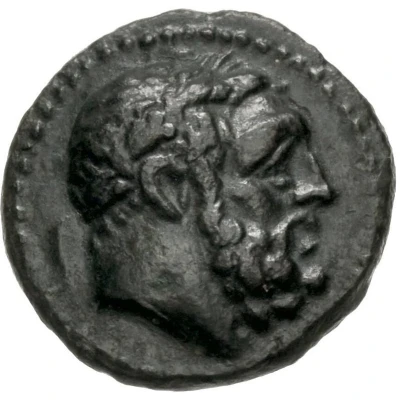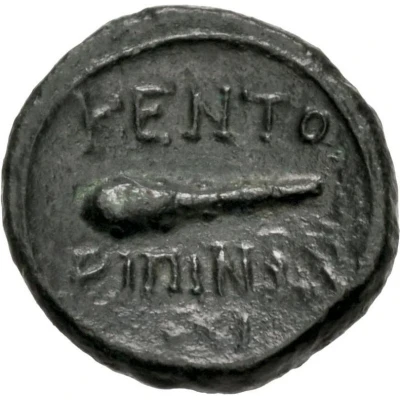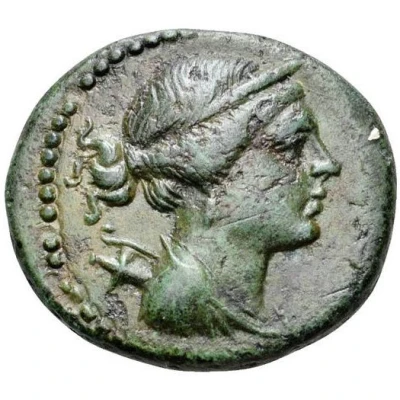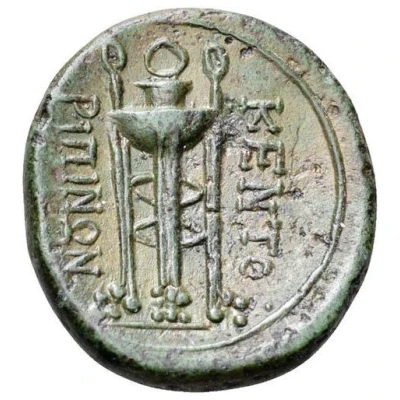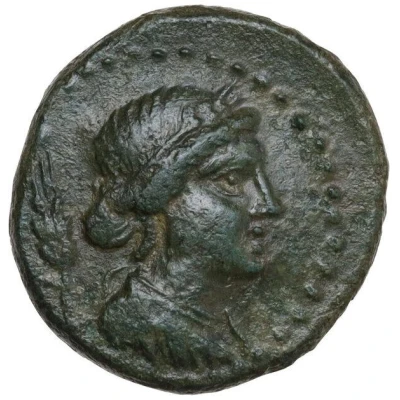
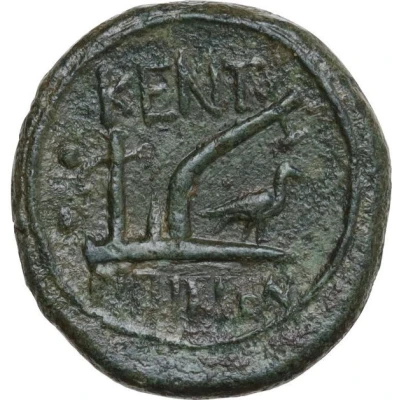

© Artemide Aste
Hexas 211 BC - 200 BC
| Bronze | 4.02 g | 14 mm |
| Issuer | Kentoripai (Sicily) |
|---|---|
| Type | Standard circulation coin |
| Years | 211 BC - 200 BC |
| Value | Hexas (⅙) |
| Currency | Litra |
| Composition | Bronze |
| Weight | 4.02 g |
| Diameter | 14 mm |
| Shape | Round (irregular) |
| Technique | Hammered |
| Orientation | Coin alignment ↑↓ |
| Demonetized | Yes |
| Updated | 2024-10-10 |
| Numista | N#161549 |
|---|---|
| Rarity index | 92% |
Reverse
Plow on the right on which is placed a dove turned right. In front of two globules placed vertically.
Script: Greek
Lettering:
ΚΕΝΤΟ
ΡΙΠΙΝΩΝ
Translation: [Coin] of the citizens of Centuripe
Comment
Calciati III pg. 175, 7; BMC Sicily pg. 56, 12; Buceti 5; Virzi 910.
Interesting fact
The Hexas coin was used as a form of currency in ancient Sicily and features a unique design that reflects the cultural and historical significance of the region. The coin's obverse side features the image of a mythical creature known as the "Kentauros," which is a half-human, half-horse figure that was believed to have been native to the island of Sicily. The reverse side of the coin features a hexagon pattern, which gave the coin its name "Hexas." This design was used to represent the six cities of Sicily that were united under the rule of King Hiero II, who issued the coin during his reign. The Hexas coin is a rare and valuable artifact that provides a fascinating glimpse into the history and culture of ancient Sicily.
Price
| Date | Mintage | VG | F | VF | XF | AU | UNC |
|---|---|---|---|---|---|---|---|
| ND (211 BC - 200 BC) | - | - | - | - | - | - |
Values in the table are based on evaluations by sales realized on Internet platforms. They serve as an indication only for Hexas (211 BC - 200 BC) coin.
